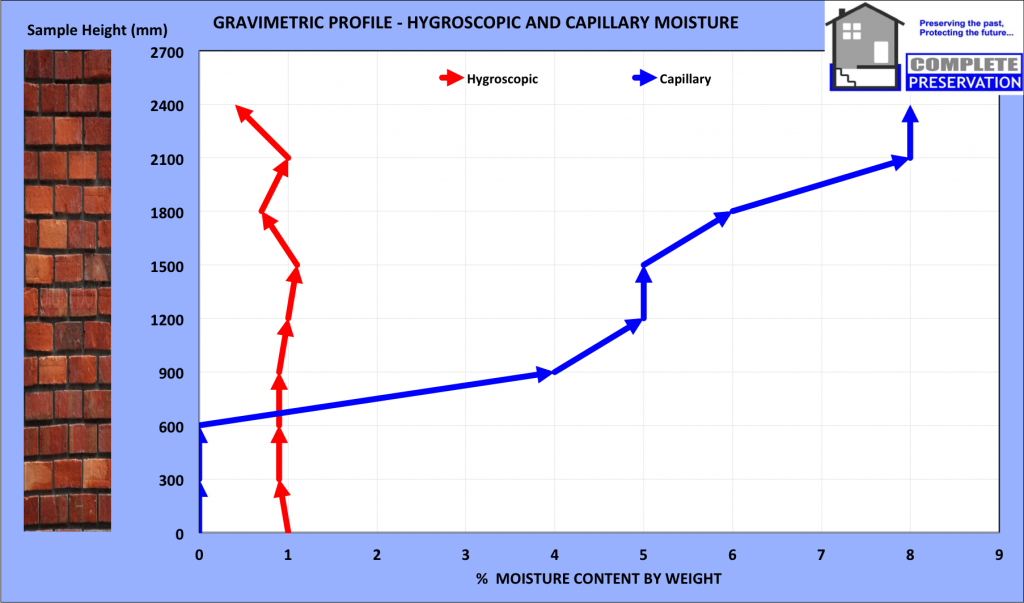Rising damp survey Wiltshire
By: admin | Posted on: January 12, 2020
This shows the very basic damp issues can get confused by some damp survey specialists. In this instance you will see the value of having a paid survey following the methodology in BRE DIGEST 245, which is the only quantitative way to measure moisture, and confirm rising damp with a moisture profile.
My client had a number of free damp surveys and the damp issues on the external wall had been diagnosed as rising damp two times, and also hygroscopic salt damp. This was all diagnosed with a damp meter only, and this isn’t what any of the BRITISH STANDARDS recommend.
When I used the damp meter with the two pins (wme mode) just to map out the moisture in the wall, I noted there were no high readings at the base of the wall, or the skirting board, which would provide a more reliable reading regarding moisture. What I did note was higher readings at high level when the damp meter was used in search mode.
Externally the building is solid red brick and exposed, now this is important because we know there can be a possible issue with penetrating damp because of wind driven rain. On further inspection I noted issues around the lintel that would allow penetrating damp an obvious route into the building.
Now I can understand why the damp surveyor thought it could be hygroscopic salts because often these can be found at higher level. I can’t understand how the other damp surveyors thought it was rising damp, and that a new damp proof course would fix the issues. I can’t understand that the damp surveyors never actually noted the location of the property in regarding the exposed position, and also the external defects.
The below graph shows the moisture profile following BRE DIGEST 245 carried out by Complete Preservation. This visually shows to even a layperson there is no capillary moisture at the base of the wall and that higher levels of capillary moisture are at ceiling height, that are adjacent the external defect. There are no hygroscopic salts present, and no high levels of hygroscopic moisture, which indicates there isn’t a rising damp issue, and never has been a long term rising damp issue.

Now whats the solution of repairing the damp issue?
Simply fixing the external defect by carrying out some lime pointing where voids are visible. And then drying the wall down with tented desiccant drying equipment to ensure there is no risk to the timber lintel. Whilst there is an initial survey fee, you can see the value in this, and also the cost of repairs are a lot cheaper than a new damp proof course and plastering. Oh, and there is no disruption and mess to deal with 🙂
We carried out the lime pointing repairs, and the installed the desiccant drying equipment, and signed it off as dry when finished. The client was also a guest on our SuperVision real time moisture data loggers so they could actually log in to see how it was drying down for a transparent service.
If you have a damp issue please don’t hesitate to get in contact with us 01225 769215

Hello
Do you have a order for a damp survey from Dave Sims of Greensquare
We’ve not been given an order from Dave Sims of Greensquare.